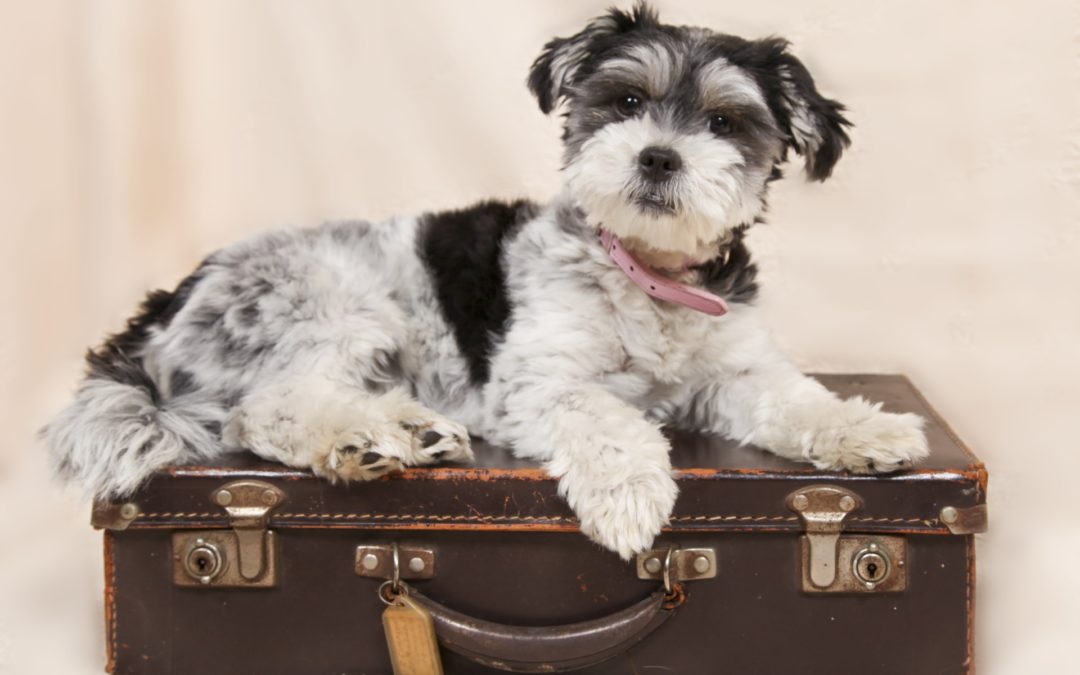Since May 11th was National Animal Disaster Preparedness Day, our staff at Anasazi Animal Clinic in Gilbert wants to take the time to make sure you and your furry family members have everything you need in the case of a disaster. These include natural disasters like fires, flooding, tornadoes, hurricanes, earthquakes, or blizzards. Luckily, in Arizona we don’t see many natural disasters. Nevertheless, it is important to be prepared. Here is our guide on how to keep your pets safe in a disaster.
Create an Emergency Supply Kit
One of the best ways to be ready for a disaster is to create a disaster prep safety kit with all of the necessary supplies. Preparing your family and pets for emergencies now will help ensure the safety of your animals, should such an event unexpectedly strike. It’s a good idea to have two kits—one for if you need to shelter in place and a smaller kit that you can take with you in case you need to evacuate.
Things to include in your kit:
-
- Food— keep 3-7 days of food for each pet in an airtight, waterproof container. Replace every two months.
- Water— store at least 7 days of water specifically for each pet.
- Medicines, medical records, and vaccine record
- First aid kit—cotton bandage rolls, bandage tape, scissors, antibiotic ointment, flea/tick prevention, latex gloves, rubbing alcohol, and saline solution.
- Collar with an ID tag, harness, and leash—keep copies of your rabies tag/certificate, as well as registration.
- Crate or other pet carrier—carrier should be large enough for your pet to stand, turn around, and lie down. Include blankets/towels that can be used as bedding or to keep your pets warm in case of a power outage.
- Sanitation—include pet litter and disposable litter boxes, paper towels, plastic trash bags, cleaning products.
- A picture of you and your pet together— if you become separated from your pet during an emergency, you will need to be able to prove ownership. Include detailed information about the species, breed, age, sex, color, and other distinguishing characteristics. Along these lines, it’s best to ensure that your pet is microchipped and your address and contact information is up to date.
How to Plan for an Emergency:
- First of all, it is important to know what kind of potential disasters could affect your area—including those that might call for an evacuation, and those that would require you to shelter in place.
- Make sure your pets are microchipped.
- If you must evacuate, take your pets with you if at all possible. Please know that some public shelters do not allow pets. Plan in advance for shelter alternatives such as pet-friendly hotels or out of town relatives/friends.
- Also, have a back-up emergency plan in place just in case you are unable to care for your animals. Ask a neighbor, friend, or relative ahead of time to help in the event of an emergency.
- Plan on how you assemble your pets on short notice. Dogs should NEVER be chained outdoors. Keep your kits in an area that is easily and quickly accessible.
- Locate a veterinary or animal hospital in the area where you may be seeking shelter, in case your pet has need of medical care.
- Get a rescue alert sticker—place it on or near your front door so rescue teams know the type and number of pets inside.
We hope you never have to deal with an emergency. However, taking the time now to prepare yourself and your pets will help you encounter less difficulty, stress, and worry in the event that an emergency does occur. If you have any further questions about how to keep your pets safe in a disaster, ask us at your next appointment at Anasazi Animal Clinic in Gilbert. Disaster preparedness for your pets is just part of our ongoing commitment to helping you keep your fur babies safe, healthy, and happy.
Image by Rayleen Slegers from Pixabay

